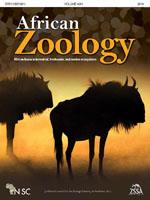Nestmate recognition in ants is based on cuticular hydrocarbons (CHCs), which are heritable and may also be acquired from the environment (i.e. diet and nest environment). In Argentine ants (Linepithema humile), diet and a homogenous environment have been shown to affect nestmate recognition by altering the CHC profile and consequently intraspecific aggression. In our study, Argentine ants were collected from field nests representing two supercolonies in South Africa. Individuals were paired in aggression assays and their CHC profiles analysed. The same nests used in the aggression assays were maintained in the laboratory for five months on a shared diet of crickets and sugar water, in soil-free nests. We predicted that aggression between previously aggressive paired individuals from different nests would decrease over time through the homogenisation of CHCs as a consequence of the shared diet and similar nesting environment. Our data showed that ants maintained in the laboratory readily absorbed prey-derived hydrocarbons and experienced a loss in the number of cuticular compounds compared with their original CHC profiles. However, the changes in CHCs did not impair nestmate recognition with non-aggressive paired interactions maintained while previously aggressive paired interactions persisted. The persistence of aggression between previously aggressive pairs despite environmental homogeneity supports the notion that intrinsic nestmate recognition cues are not overridden by extrinsic cues in the recognition system of Argentine ants.
How to translate text using browser tools
1 October 2016
“You are Not Always What You Eat”: Diet Did Not Override Intrinsic Nestmate Recognition Cues in Argentine Ants from Two Supercolonies in South Africa
Natasha P Mothapo,
Theresa C Wossler
ACCESS THE FULL ARTICLE
<
Previous Article
|

African Zoology
Vol. 51 • No. 3
October 2016
Vol. 51 • No. 3
October 2016
cuticular hydrocarbons
intraspecific aggression
Linepithema humile
nestmate recognition
supercolonies




